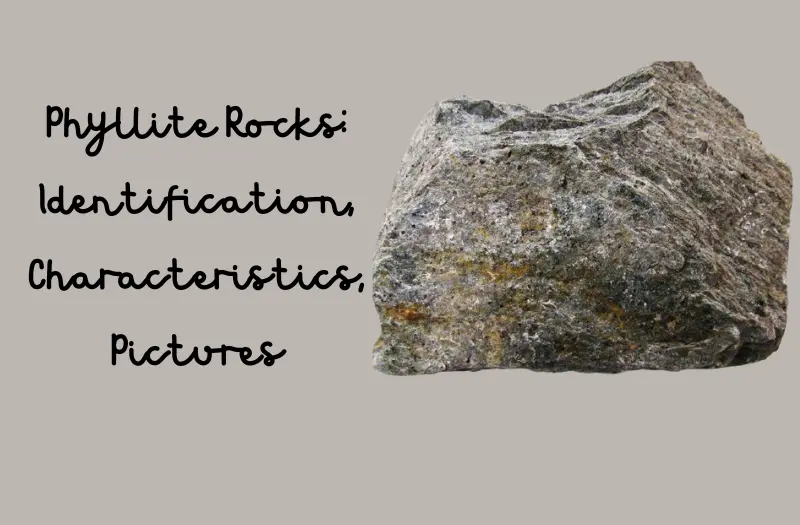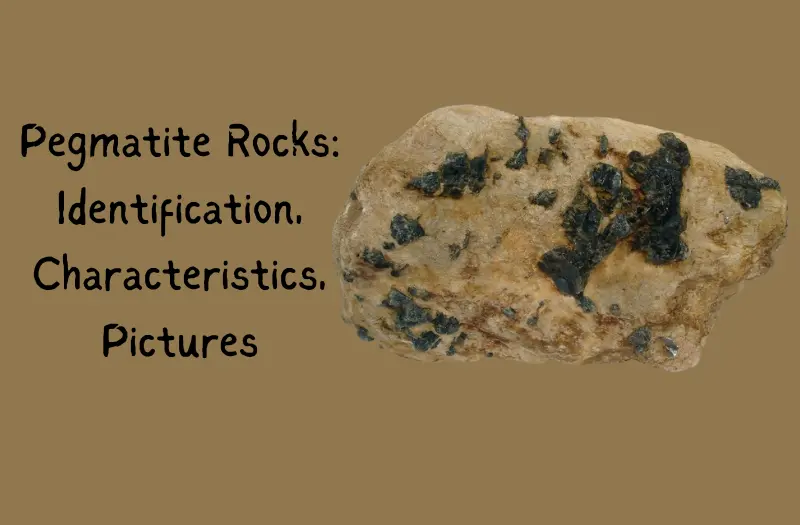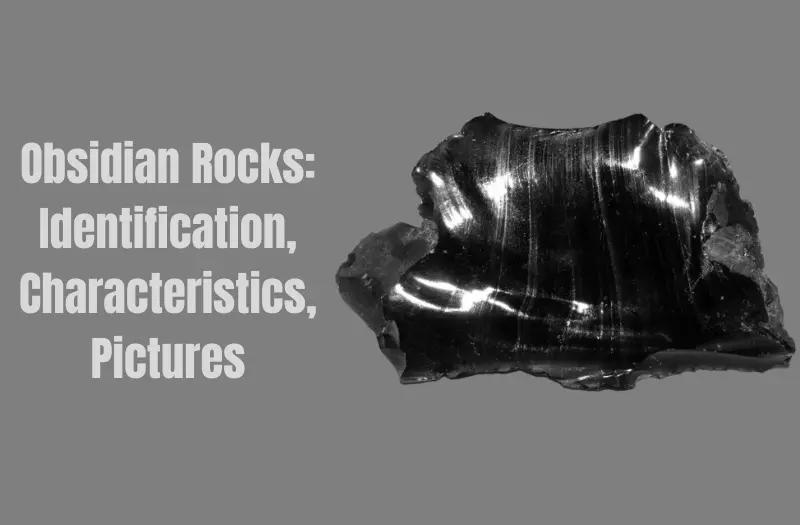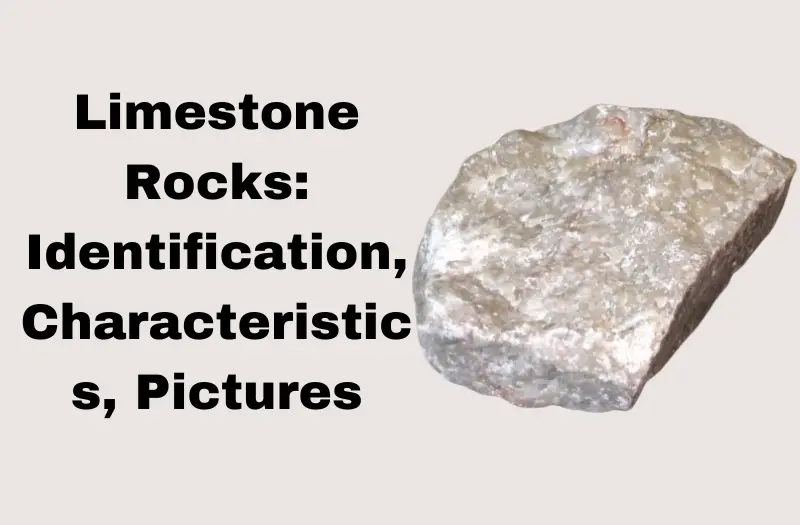When it comes to phyllite rock, they say ‘still waters run deep.’
Have you ever wondered about this intriguing metamorphic rock and its unique characteristics?
From its origin and composition to its physical appearance, color variations, and mineral composition, phyllite holds a wealth of secrets waiting to be uncovered.
Whether you are a geology enthusiast or simply curious about the Earth’s hidden treasures, exploring the world of phyllite may just reveal a fascinating journey of discovery.
Origin and Composition
When examining the origin and composition of phyllite rock, it’s essential to understand its formation process and mineral content. Phyllite is believed to originate from the metamorphism of shale or mudstone due to heat and pressure within the Earth’s crust. These origin theories suggest that the intense compression and temperature changes lead to the recrystallization of the rock, giving rise to phyllite’s distinct properties.
Regarding its chemical composition, phyllite primarily consists of fine-grained mica minerals such as muscovite and chlorite, along with quartz and other minerals. These components contribute to phyllite’s characteristic silky sheen and foliated texture variations, making it distinguishable from other rocks. The presence of these minerals also influences phyllite’s color patterns, which can range from shades of gray and green to black and silver, depending on the specific mineral content within the rock.
Understanding the origin theories and chemical composition of phyllite is crucial in identifying and differentiating this metamorphic rock from others in the geological landscape.
Geological Formation Process
To understand phyllite rock formation, you must consider the intricate processes involved. Geological factors such as pressure, heat, and mineral composition play crucial roles in shaping phyllite.
The time scale of phyllite formation provides valuable insights into Earth’s geological history.
Rock Formation Process
During the formation of phyllite rock, layers of fine-grained minerals undergo intense pressure and temperature deep within the Earth’s crust. This process involves intricate geological forces that shape the rock over time.
Here are some key points to understand the rock formation process:
- Rock Cycle Processes: Phyllite formation is part of the continuous rock cycle, where rocks undergo various transformations.
- Geological Time Scales: The formation of phyllite occurs over vast periods, reflecting the slow but steady changes in Earth’s crust.
- Erosion Dynamics: External factors like erosion play a role in shaping phyllite and exposing it on the surface.
- Pressure and Heat: The combination of pressure and heat alters the mineral composition, leading to the distinct characteristics of phyllite.
Geological Factors Involved
In the formation of phyllite rock, geological factors intricately interact to shape its unique characteristics. These geological factors play a crucial role in determining the final composition and appearance of phyllite.
The rock identification process involves considering factors such as the parent rock type, pressure, temperature conditions, and the presence of minerals like mica. Phyllite is typically formed from the metamorphism of slate, undergoing further metamorphic changes due to increased temperature and pressure.
The alignment of mica minerals within the rock gives phyllite its characteristic silky sheen and foliated texture. Understanding these geological factors is essential for accurately identifying and studying phyllite rocks in various geological settings.
Time Scale of Formation
The geological formation process of phyllite rock unfolds over significant periods, reflecting the intricate transformation of its precursor materials under specific conditions. Understanding the time scale of formation provides valuable insights into the evolution of phyllite.
- Slow Transformation: Phyllite forms over millions of years through intense pressure and heat.
- Metamorphic Progression: The rock evolves from slate into phyllite through gradual changes.
- Geological Events Influence: Tectonic movements and regional metamorphism play crucial roles in phyllite formation.
- Indicator of Geological History: The time scale of phyllite formation can reveal past environmental conditions and geological events.
Physical Appearance and Texture
With a distinctive silky sheen and a medium-grained texture, phyllite rock stands out among metamorphic rocks for its unique appearance. Phyllite’s physical properties are a result of its mineral composition, typically consisting of primarily fine-grained mica minerals such as muscovite and chlorite, along with quartz and other minerals. The silky sheen that gives phyllite its distinctive look is often attributed to the alignment of these mica minerals within the rock, reflecting light in a shimmering manner.
In terms of texture, phyllite is characterized by its smooth surface and medium-grained structure. This medium-grained texture sets it apart from other metamorphic rocks like slate, which has a finer texture, and schist, which has a coarser texture. When you run your fingers over phyllite rock, you may feel a slight sheen and a gentle resistance due to its compact nature. The combination of its mineral composition and physical properties gives phyllite a unique appearance that’s both visually appealing and intriguing to geologists and rock enthusiasts alike.
Color Variations and Patterns
Take a moment to observe the rich color spectrum found in phyllite rocks.
Notice the intricate patterns that can form within phyllite formations, adding depth and character to this type of rock.
These variations in color and patterns are key identifiers when examining phyllite specimens.
Color Spectrum in Phyllite
Exploring the color spectrum in phyllite reveals a fascinating array of variations and intricate patterns that characterize this unique rock type. When examining phyllite, you’ll notice that its color variations are influenced by its mineral composition and the geological factors that shaped it.
The physical appearance of phyllite can vary greatly, showcasing a broad palette of colors that can include:
- Earthy browns and tans
- Shades of gray and black
- Olive greens and subtle yellows
- Occasionally, hints of metallic sheens
These diverse color variations in phyllite are a testament to the complex processes that occurred during its formation, making each specimen a visually captivating piece of Earth’s geological history.
Patterns in Phyllite Formations
Showing a mesmerizing array of colors and intricate patterns, phyllite formations reveal the complex geological processes that have shaped them over time.
Foliation patterns, which are a result of mineral alignment due to pressure and heat, are prominent in phyllite. These patterns often exhibit a characteristic silky sheen, created by the alignment of fine-grained minerals like mica and chlorite. The intensity of foliation can vary, indicating the metamorphic grade of the rock and providing insights into the conditions it has undergone.
Additionally, the rock texture of phyllite is typically smooth and glossy, reflecting the alignment of minerals during the metamorphic process. Observing these patterns can offer valuable information about the geological history and formation of phyllite.
Mineral Composition Analysis
Analyzing the mineral composition of phyllite rock provides essential insights into its formation and geological history. Through mineral composition analysis, scientists can uncover crucial information about the crystal structure and petrographic characteristics of phyllite. Here are some key points to consider:
- Mineral Composition Analysis: By conducting mineral composition analysis, researchers can identify the specific minerals present in phyllite, such as quartz, micas, chlorite, and other minerals commonly found in this type of rock.
- Crystal Structure: Understanding the crystal structure of phyllite minerals helps geologists infer the conditions under which the rock formed and the geological processes it has undergone over time.
- Petrographic Analysis: Petrographic analysis involves studying the textures and mineral components of phyllite under a microscope, providing detailed information about its origin and metamorphic history.
- Implications for Geological History: The findings from mineral composition analysis and petrographic studies aid in reconstructing the geological events that shaped the formation of phyllite, offering valuable insights into the Earth’s dynamic processes.
Also Read: Pegmatite Rocks: Identification, Characteristics, Pictures, and More
Identification Techniques and Tools
When identifying phyllite rock, you can rely on:
- Visual examination methods
- Chemical testing tools
- Microscopic analysis techniques
These tools and techniques play a vital role in accurately determining the unique characteristics of phyllite and distinguishing it from other rock types.
Visual Examination Methods
To identify phyllite rock through visual examination, utilize a hand lens or magnifying glass for enhanced observation of its distinctive foliation and fine-grained texture. When inspecting phyllite rock, focus on the following key aspects:
- Mineral Identification: Look closely at the minerals present within the rock to determine its composition.
- Visual Examination: Use a hand lens to examine the rock’s texture and structure for identifying features.
- Texture Analysis: Analyze the fine-grained texture of the phyllite to distinguish it from similar rocks.
- Color Variations: Note any variations in color within the rock, as this can provide clues about its formation and mineral content.
Chemical Testing Tools
Utilize chemical testing tools to enhance the identification of phyllite rock by analyzing its mineral composition and chemical characteristics. Spectroscopy analysis and X-ray diffraction techniques are valuable methods for determining the specific minerals present in phyllite. Spectroscopy analysis involves studying how materials interact with different wavelengths of light, providing information on the chemical bonds present. X-ray diffraction techniques, on the other hand, allow for the identification of minerals by analyzing the diffraction patterns produced when a sample is exposed to X-rays. By combining these two techniques, geologists can obtain detailed insights into the mineral composition of phyllite, aiding in its accurate identification and classification.
| Chemical Testing Tools | Description | Utility |
|---|---|---|
| Spectroscopy Analysis | Studies light interactions | Provides chemical bond details |
| X-ray Diffraction Techniques | Analyzes diffraction patterns | Identifies minerals present |
Microscopic Analysis Techniques
Enhance your understanding of phyllite rock by exploring the microscopic analysis techniques used for identification and classification. When examining phyllite samples under a microscope, you can utilize various techniques to determine their mineral composition and texture analysis.
- Thin Section Preparation: Creating thin slices of the sample for detailed examination.
- Polarized Light Microscopy: Using polarized light to observe mineral properties.
- Scanning Electron Microscopy (SEM): Providing high-resolution images for detailed analysis.
- Energy-Dispersive X-ray Spectroscopy (EDS): Identifying elements present in the sample through X-ray analysis.
Key Characteristics Overview
Understanding the key characteristics of phyllite rock is essential for correctly identifying this metamorphic rock type. Phyllite exhibits physical characteristics that distinguish it from other rocks. It typically has a silky sheen due to the alignment of its fine-grained mica minerals during the metamorphic process. This sheen gives phyllite a distinct shimmering appearance when light reflects off its surface.
In terms of mineral composition, phyllite primarily consists of mica minerals such as muscovite and chlorite, along with quartz and other minerals like feldspar. These minerals contribute to phyllite’s smooth texture and foliated structure, which allows it to be easily split into thin sheets. This foliation is a key characteristic that sets phyllite apart from similar rocks like slate and schist.
Additionally, phyllite often displays a wavy or wrinkled texture, known as crenulations, caused by the intense pressure and heat it undergoes during metamorphism. By recognizing these key physical characteristics and mineral compositions, you can accurately identify phyllite rock in the field.
Regional Distribution and Occurrence
Phyllite rock is commonly found in various regions around the world, showcasing a distinct distribution and occurrence pattern. This rock type is prevalent due to specific geological factors and mineral composition that influence its formation.
- Regional Distribution
- Phyllite rock can be found in mountainous regions across continents.
- It’s notably present in areas with high metamorphic activity.
- Coastal regions often feature exposures of phyllite formations.
- Some specific locations include the Appalachian Mountains in North America and the Scottish Highlands in Europe.
The occurrence of phyllite is closely tied to the geological processes that transform sedimentary or igneous rocks into this distinct metamorphic rock type. The mineral composition of phyllite, primarily composed of muscovite, chlorite, and quartz, contributes to its unique characteristics and appearance in different regions worldwide. Understanding the regional distribution and occurrence of phyllite rock provides valuable insights into the Earth’s geological history and the forces that shape our planet’s landscapes.
Comparison With Similar Rocks
When comparing phyllite rock with similar rocks, one can observe distinct differences in their mineral composition and texture. In terms of rock classification and properties, phyllite is often compared to schist and slate. While phyllite is metamorphic rock that falls between slate and schist in terms of metamorphic grade, it exhibits a higher degree of metamorphism compared to slate but is less metamorphosed than schist. This difference in metamorphic grade is reflected in the texture of the rocks, with phyllite displaying a more pronounced sheen and a greater presence of mica minerals compared to slate.
Rock formation and geological processes also play a crucial role in distinguishing phyllite from similar rocks. Phyllite forms through the metamorphism of shale or mudstone under relatively low to moderate temperatures and pressures. This process results in the alignment of fine-grained minerals, giving phyllite its characteristic foliated texture. In contrast, schist forms under higher temperatures and pressures, leading to coarser mineral grains and a distinct foliation that sets it apart from phyllite. Understanding these differences in rock formation and properties is essential for accurately identifying and distinguishing phyllite from other metamorphic rocks.
Engineering and Industrial Applications
Rock engineers and industrial professionals utilize the unique properties of phyllite in various applications due to its distinct metamorphic grade and mineral composition when compared to similar rocks like schist and slate. Phyllite’s fine-grained texture and excellent foliation make it a valuable resource for a wide range of engineering and industrial purposes.
- Industrial Applications: Phyllite is utilized in the manufacturing of roofing materials, decorative stones, and countertops due to its durability and attractive appearance.
- Engineering Advancements: The strong and resistant nature of phyllite makes it a preferred choice for constructing foundations, walls, and pavements in civil engineering projects.
- Economic Benefits: The availability of phyllite in abundant quantities and its ease of extraction contribute to cost-effective construction practices, leading to significant economic benefits.
- Technological Innovations: Ongoing research explores new ways to incorporate phyllite in advanced technologies such as geopolymer composites and green building materials, showcasing its potential for future technological advancements.
Environmental Impacts and Concerns
Considering the increased extraction and utilization of phyllite in various industries, it’s crucial to assess the environmental impacts and associated concerns arising from these activities. The ecological impact of phyllite mining and processing can lead to habitat destruction and fragmentation, impacting local flora and fauna. Conservation challenges arise as sensitive ecosystems may be disrupted, endangering rare or endangered species. Additionally, the release of dust and chemicals during extraction poses risks to air and water quality, affecting surrounding communities and wildlife.
To address these concerns, environmental regulations play a vital role in monitoring and controlling phyllite-related activities. Compliance with these regulations ensures that mining operations minimize their ecological footprint and reduce harm to the environment. Sustainability initiatives within the industry, such as reclamation projects and resource efficiency measures, can help mitigate the environmental impact of phyllite extraction. By promoting responsible practices and innovation, the industry can strive towards a more sustainable future while safeguarding the delicate balance of ecosystems.
Preservation and Conservation Efforts
To enhance the sustainability of phyllite extraction practices, implementing robust preservation and conservation efforts is imperative. When considering preservation efforts and conservation strategies for phyllite rock, there are several key actions that can be taken:
- Revegetation Programs: Implementing programs to replant native vegetation in areas where phyllite extraction has occurred helps restore ecosystems and prevent soil erosion.
- Water Management Practices: Proper management of water resources, such as minimizing water usage during extraction and implementing sediment control measures, can help preserve water quality in the surrounding areas.
- Habitat Restoration Projects: Engaging in habitat restoration initiatives can help offset the impact of phyllite mining on local flora and fauna, ensuring the preservation of biodiversity.
- Monitoring and Compliance: Regular monitoring of extraction sites and adherence to environmental regulations are essential for effective conservation of phyllite resources and the surrounding environment.
Future Research and Developments
Exploring innovative technologies and sustainable practices is crucial for advancing the extraction and utilization of phyllite in the future. Keeping up with future trends and technological advancements will be key in enhancing the efficiency and environmental sustainability of phyllite mining and processing operations.
Future research in phyllite could focus on improving extraction methods to ensure minimal environmental impact. Developing more efficient ways to extract phyllite while reducing waste generation will be essential for sustainable resource utilization. Additionally, exploring ways to enhance the quality assessment of phyllite deposits through advanced sensing technologies could streamline mining processes.
Technological advancements in the field of phyllite research may include the use of drones and remote sensing techniques for geological surveys. These tools can provide valuable data for identifying potential phyllite reserves, optimizing mining operations, and monitoring environmental impacts. Implementing automation and robotics in mining processes can also increase safety and productivity.
Frequently Asked Questions
Can Phyllite Rock Be Used as a Countertop Material in Homes?
Yes, phyllite countertops can be used in homes. They offer durability and a unique look for kitchen or bathroom designs. Maintenance is relatively easy, making phyllite a trendy choice for modern interiors.
Are There Any Superstitions or Folklore Associated With Phyllite Rock in Certain Regions?
In certain regions, phyllite rock holds cultural beliefs and folklore, adding to its geological significance. Superstitions about its mystical properties and healing energies have been passed down through generations, making it a revered stone.
How Does Phyllite Rock Impact Local Ecosystems and Wildlife?
Phyllite rock’s presence can alter ecosystems, affecting wildlife habitats and biodiversity. Conservation efforts are crucial to balance its impact. Consider how local flora and fauna interact with this rock to protect the environment.
Are There Any Famous Landmarks or Buildings Made of Phyllite Rock?
There are numerous geological formations and architectural wonders made of phyllite rock. Landmark constructions showcase its durability and historical significance. From ancient structures to modern buildings, phyllite’s unique characteristics have stood the test of time.
Can Phyllite Rock Be Used in Jewelry Making or Other Decorative Purposes?
Yes, Phyllite rock can be used in gemstone jewelry due to its attractive sheen and durability. It’s also popular in sculpture art for its fine grain and ability to hold intricate details.
Conclusion
Overall, phyllite rock is a metamorphic rock that’s derived from shale or mudstone through intense heat and pressure. It’s characterized by its silky sheen, fine-grained texture, and distinct foliation.
With its unique properties and mineral composition, phyllite has various engineering and industrial applications. However, it’s important to consider the environmental impacts and ensure proper preservation and conservation efforts for this valuable rock.
Exciting future research and developments are sure to uncover even more about this fascinating rock.




Leave a Reply